#regional variation
Explore tagged Tumblr posts
Note
how does convergent evolution work? what makes it different from a regional form?
OOOOH very good question! very very good question and i’m glad someone asked.
so, let’s take an easier to see example first:

regional variants are a pokemon of the same species that have adapted to another climate or environment; in this example, vulpix, initially native to kanto, are also found as alolan vulpix (natively known as keokeo), who have adapted to the cold weather of mount lanakila, thus also adopting the ice type. i don’t even know why they did this, though, alola is warm in literally any other place. perhaps it was cooler all over at one point...?
as for convergent evolution:

let’s get this straight: these pokemon are not the same species. one’s a water blobby guy, the other’s a fungus
convergent evolution is, to put it simply, two separate species of pokemon adapting a similar body plan by necessity. for example, tentacool has these tentacles to, of course, swim and propel itself, but for toedscool the shape of their legs, which are mostly just blobs of muscle, are perfect for running. both shapes are equally good for hiding in their respective environments!
i do hope this helps!
#pkmn irl#pokemon#fire type#ice type#water type#poison type#ground type#grass type#regional variation#convergent evolution#kanto pokemon#alola pokemon#paldea pokemon
12 notes
·
View notes
Text
Global Poll regional variations

The 7 who ranked in Top 10 everwhere:
Bakugou,
Deku,
Shoto,
Aizawa,
Kirishima
Hawks
Dabi
Characters who ranked Top 10 at least in 1 region:
Shigaraki (7) - everywhere but Japan
Uraraka (6),
Endeavor (4)
Monoma (2)
Toga (2)
All Might (1)
AFO (1)
Tamaki (1)
#bnha global poll#regional variations#global top 10#todoroki shouto#bakugou katsuki#midoriya izuku#dabi#todoroki touya#aizawa shouta#kirishima eijirou#hawks#endeavor#uraraka ochako#himiko toga#shigaraki tomura#monoma neito#all might#afo#tamaki amajiki
150 notes
·
View notes
Text

Geode Dudes
#my art#creature design#monster design#little guys#pokémon#pokemon#fakemon#pokemon variations#original pokemon#pokemon variants#regional variant#rock#rock monster#rock type#geode#geodude#amethyst#agate#okenite#azurite#dragon type#psychic type#normal type#fairy type#fakemon friday
241 notes
·
View notes
Text

Some coast striker concept doodles, mostly to showcase their weirdo double tongue + i love drawing teeth. Also whelps are see through when they hatch, most lose this quality as they grow, but a few (especially in the Deepwater) keep their translucency well into adulthood.
A small fun fact, many humans call coast strikers "grinning deaths" as their toothy snarls can look like a grin to a person. Given their amount of teeth and their two tongues, other AshWings can find them a bit unsettling
#wings of fire#wof#ashwing#dragons#art#oh yeah remember those region variation drawings i made? im dividing the coast into three regions: the deepwater (open ocean/seabed)#the saltwater (the coastal cliffs) and the freshwater (more inland in the peninsula lots of#wetlands and rivers and lakes. kinda like everglades and mangroves in some areas#however im not sure about the eggs. hmmmm#bc its like this OR regular eggs with an almost conical shape which i believe is common in cliff birds? so the eggs spin on the same place#instead of out of the nest and falling to their doom
425 notes
·
View notes
Text
#for it's sour cream and onion aaaaaall the way#yes this is uscentric im not looking up every regional variation of the word or most popular flavors everywhere#we'll all be fine#for me a close second is these artichoke ones that got discontinued rip i miss them so much
250 notes
·
View notes
Text
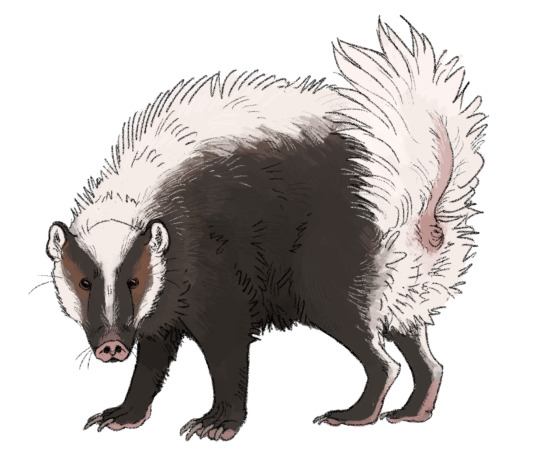
The wassibi, threatening you with a very bad time.
Wassibi are mid-sized (11-16 lb) solitary mustelids. This species is native throughout the lands south of the Viper seaway, thriving as generalists in a great diversity of habitats (though rarely occur in very arid environments or at high elevations). They are omnivores, using their broad noses and strong claws to dig out earthworms, beetle larvae, roots and tubers, foraging along the ground for insects, scorpions, bird eggs, fallen fruit, and small lizards and snakes, and occasionally scavenging carcasses and trash. They are particularly noted for their ability to find honey- splitting open bees nests with their claws and leisurely consuming larvae and honeycomb, seemingly untroubled by bee stings.
Wassibi are known above all else for their devastatingly noxious defensive anal gland spray. When threatened, they hiss, arch their backs and tails, raise their fur, and point their anus menacingly in the direction of danger. Should posturing fail, they will unleash their spray at the threat's face. Their anal glands have powerful muscular control and the attack is devastatingly accurate at up to 10 ft. In addition to having an atrocious stench, the liquid is mildly irritating to the skin, painful and temporarily blinding to the eyes, and can induce intense nausea and vomiting. The smell is resistant to washing, and can take weeks to fade. Most predators who experience a hit will learn to recognize the wassibi's stark aposematic coloring and avoid anything resembling it.
In addition to this potent defensive weaponry, they have dense fur and thick, loose skin, which renders them difficult for most predators to effectively grasp or pierce without risk of being bitten themselves. As such, wassibi have few consistent natural predators and are given a wide birth by most other animals. Their tendency to walk boldly in the open and sometimes even scavenge at carcasses alongside much larger predators commonly lends them cultural reputations of fearlessness. Wassibi are known for attacking large venomous snakes that potentially threaten their young, which (along with their frequent consumption of scorpions and bees) leads to common misconceptions that they are entirely immune to venom. They have no such resistance, rather their thick fur and loose skin cause bites and stings to land less effectively- most stings fail to penetrate their fur altogether, and bites often deal glancing blows that inject little to no venom.
Their biggest predatory threats come from humans. Wassibi meat is fairly rich and not unappealing to most palates used to wild game, but they are rarely considered worth the effort and risk of killing for consumption alone. They are more commonly hunted for their pelts (worn commonly by Wogan and North Wardi herders in hopes of deterring attacks from predators), bones, claws, and fat (used in traditional medicine for their purported antivenom properties). This hunting is fairly limited in scope overall, and most Wassibi populations remain stable.
#creatures#Here's the badger I mentioned in prev post. Together they are the two skunk analogues of this region#(not sure if actual skunks are a thing anywhere in the setting or nah)#Stink badger but actually a mustelid#Though while looking into this I found out there IS actually a true mustelid with a defensive spray (striped polecat)#Kind of interesting that the examples of aposematic coloring in mammals are all variations on the stark black and white theme#I mean it makes sense because these are the most vivid contrasting colors mammalian fur can develop and most mammals#are covered in fur. But I suppose one Could in theory have aposematic coloring on a large area of bare skin that's like.#bright and colorful like a mandrill or smth#OH the streaked tenrec exists but that's the only exception I can think of
131 notes
·
View notes
Text
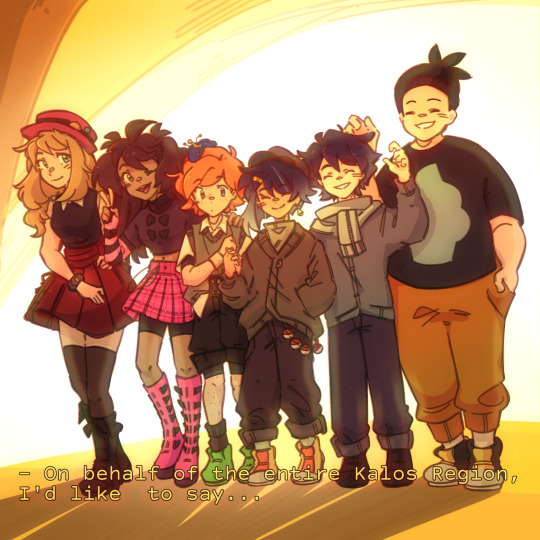
Thank you :)
#digital art#art#original character#pokemon#oc#digital artwork#oc artwork#pokemon oc#original character art#pokemon original character#oc tag#canon x oc#pokemon trainer oc#oc x canon#pokemon trevor#trevor pokemon#pokemon serena#serena pokemon#tierno pokemon#pokemon tierno#pokemon shauna#shauna pokemon#izumi shimizu#ai kouseki#direct variation#pokemon x and y#pokemon xy#gen 6#kalos region#kalos
307 notes
·
View notes
Text

🌟wanted to try & get back into making fakemon after like 6 years🌟
so I thought of Meowscarada, Delphox, & Primarina (my 3 fav starter lines) being the starters of a Unova Legends game & so here are the rough draft designs + concepts I came up with:
they’re all based on different regions + time periods of the US (which Unova is supposed to be based on)
Meowscarada’s inspo is the modern southern US (specifically Louisiana, more specifically New Orleans) & its design + lore is heavily based on New Orleans’ celebration of Mardi Gras (which is already a design inspo for regular Meowscarada, but I brought it to the forefront here); it’s a grass/fairy type since fairy is by far the type most commonly associated with food (& y’know, “Fat Tuesday”), so it’s basically a well-intentioned, literal, party animal that probably helped the old Unovans with their festivities 🍃🦋
Delphox’s inspo is the colonial era eastern US (specifically Massachusetts, more specifically Salem) & its design + lore is heavily based on the Salem witch trials; it’s a fire/ghost type since it’s made up of the scorned spirits of the victims of the trials (I don’t really know what the Pokemon universe’s equivalent of the witch trials would be, maybe people were accused of being ghost Pokemon or maybe even Zoroarks(?), so it’s, hypothetically, very hostile & dangerous, but if raised lovingly from a Fennekin, it could be quite docile & trusting 🔥🪦
Primarina’s inspo is the early 20th century western US (specifically California, more specifically Hollywood) & its design + lore is heavily based on early 1900s Hollywood actresses & stardom; it’s a water/psychic type since it’s supposedly ‘ahead of the times,’ (but it was definitely an omen for the modern Unovan entertainment industry), so it’s, in summation, a Hollywood darling mermaid seal with magical psychic powers (this is Pokemon, after all) that was likely simultaneously both loved by & intimidating to the people of its time 🌊🔮
I would love to flesh out these designs & concepts more, but is what i’ve got for now sksk~ ✨
#i have to say delphox is definitely my favorite of these three#a woman scorned but make it a rightfully pissed ghost fox witch? dare i say one of the best things my brain has ever cooked up#i think she should be allowed to murder without consequence 🫶#pokemon#fakemon#pokemon fanart#pokemon design#fakemon design#meowscarada#delphox#primarina#regional variant#regional variations#pokemon legends#unova pokemon#character design#fanart#digital art#my art
39 notes
·
View notes
Text
and if i said i liked greasy nargacuga more than fluffed up nargacuga then what

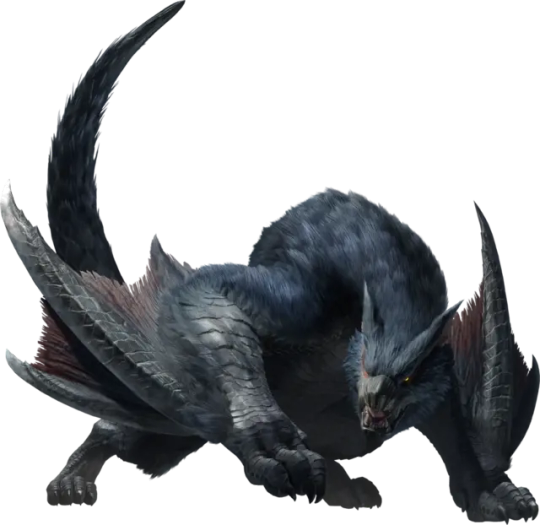
#but i like the design updates theyre like the same species in different regions#like wolves and bears have a lot of variation#nargacuga#monster hunter#monster hunter rise#text
172 notes
·
View notes
Note
favorite regional variant? i love how pokémon adapt to different places!! i don't always understand the adaptations but i'm like hell yea babey
so true!!! i think my favorite out of all of them has to be paldean wooper, second only to hisuian zorua. they r my little eeby deebies and i want so many of them. i have yet to find a place in the professor’s index where hisuian zorua are still around, though :( i’ve only ever found the smokier gray ones northeast of sinnoh
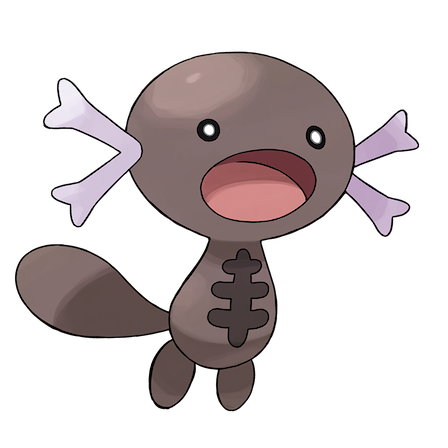
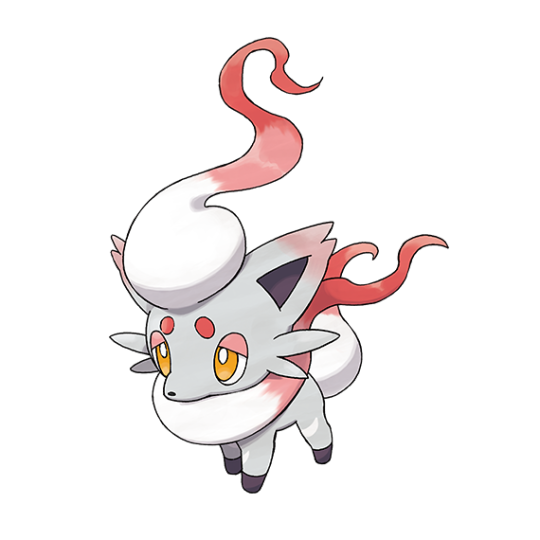
wooper is especially strange because the theory about them is that the treasures of ruin (a legendary quartet sealed within paldea) set a drought upon paldea, thus causing woopers to adapt to rapid dehydration. very interesting!!!
#pokemon#pkmn irl#normal type#ghost type#poison type#ground type#regional variation#sinnoh pokemon#paldea pokemon
1 note
·
View note
Text

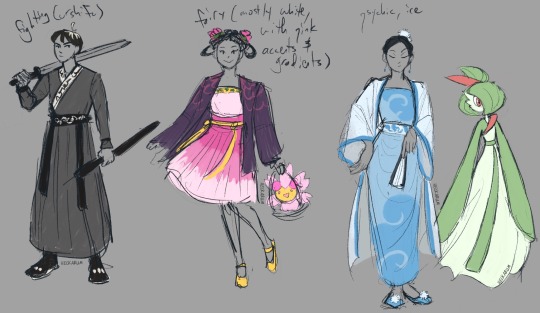


#coworker wanted to see hanfu-inspired pokemon designs#was gunna do more region variations for pokemon#but got distracted and the inspiration left me :’)#heckart#digital art#pokemon#hanfu#beautifly#polteageist#gym leaders#pokemon oc#gyarados#gardevoir#cherrim
84 notes
·
View notes
Text

Click for better quality!
Here, have some Alien Pokemon!
tell me what y'all think!
oh and infodump bellow
Alien Drilbur frequently found on asteroid impact sites. they love Clefas and often huddle together, pressing their heart-shaped nose on them, it's how they greet their friends! wanna know when an alien Drilbur is about to evolve? look at its spots! just like a galaxy, more spots mean more power!
Alien Excadrill are truly odd Pokémon, often see creating complicated structures out of dirt and clay. With their claws? No! With their telekinetic powers! any form of manual digging is more of a hobby for them now. Highly organized, they elect they most capable Excadrill to lead them. Researchers affectionately call these leaders "Captains"
#my art owo#pokemon#pokemon fanart#pokemon variations#pokemon fan design#regional form#pokemon regional variant#ground type#psychic type#drilbur#Excadrill#gen 5 pokemon#hey im back at my pokemon shenanigans
36 notes
·
View notes
Text

cooked a grass/water torterra based on aquatic turtles species and marine biology (plus pearls because haha pokemon pearl)
#pokemon#torterra#guys hear me out. what if in legends ZA we get something similar to this. I wpuld explode#or like a regional variation#traditional art
27 notes
·
View notes
Text
Looking back, it makes sense that I have a thing for male characters whose beauty could start wars. After all, I was raised with stories including those about Näcken that in my area describe him as man so beautiful and with music so haunting that it lures people closer and to their drowning deaths.
Like if you're a queer freak from birth like me, the existence of a devastatingly beautiful naked twink playing violin in streams and riverbends to kill people WILL alter your brain chemistry forevermore.
#like i knew but also idk if it REALLY occured to me WHY i was so obsessed with him growing up LOL#there are many regional variations of him not just in sweden but also norway for instance#so my description isnt THE sole definition. in fact if ANYONE tells you there are definitive singular versions—#of any nordic folklore creatures/myths/tales etc? do NOT trust them. theres a dialectal AND folklore continuum at play in these lands#for sweden in particular the differences between regions and provinces can be noticeable in that they can bear resemblance#to whichever other nordic country theyre geographically closest to. not all the time but yknow what i mean#i am rambling. my adhd feels extreme today. i started thinking about this because i was pondering on folklore creatures that—#reminds me of irrim and his story. and then that spiralled into this. partially because irrim is also devastatingly pretty#and thats kinda like näcken lmao. anyway im RANTING#silvi talks
18 notes
·
View notes
Text
Endless Mountains Region Pokédex




#em pokédex#Endless mountains region#pokemon#pkmn#alexander’s pokémon adventure#pokemon art#pkmnart#pokeart#pokemon oc#pkmn fanart#pokemon variations#pokegraphic#Fakemon
14 notes
·
View notes
Text

[ill show the yumetober stuff tmr]
Ai Kouseki 💎 - "Anya... No... Don't kid me..."
Only a few months after the disappearance of Izumi Sycamore, Anya takes Ai to check out an alley Izumi is known to frequent.
Upon further investigation, the dried blood was discovered to be Izumi's. No other traceable evidence was found and a year later, the alley opened up again. Anya stays by the alley and follows around people dressed in red. Nobody knows what it could mean. Team flare was already disbanded.
#digital art#art#original character#digital artwork#oc artwork#original character art#pokemon#pokemon oc#pokemon original character#oc#pokemon fanfiction#pokemon trainer oc#pokemon trainer#ai kouseki#furfrou#kalos#kalos region#oc lore#pokemon x and y#pokemon xy#pokemon x#pokemon y#oc tag#oc drawing#izumi shimizu#pokemon art#oc art#gen 6#direct variation
38 notes
·
View notes